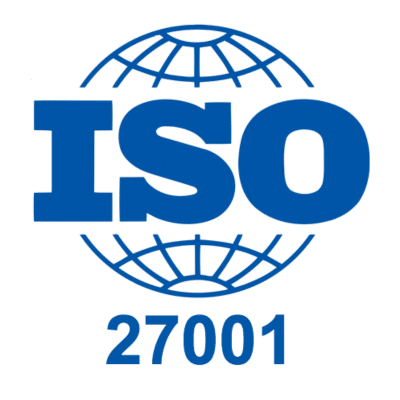What is employee satisfaction?
Employee satisfaction is how content and fulfilled employees feel in their roles and with their organization. It reflects how well an organization meets employees’ needs and expectations.

Factors such as job satisfaction, compensation, work-life balance, and growth opportunities significantly impact satisfaction levels. Companies often rely on tools like employee engagement surveys or pulse surveys to measure employee satisfaction and identify areas to improve.
What are the best ways to understand employee satisfaction?
Understanding employee satisfaction means knowing how content employees feel about their roles, responsibilities, workplace culture, and overall work experience.
When employees are satisfied, they are more likely to stay with the organization, perform better, and contribute to a positive work environment.
Here are some of the best ways to assess and understand employee satisfaction:
- Conduct Regular Surveys: Anonymous employee satisfaction surveys help gather honest feedback on job roles, management, workload, and company culture.
- Host One-on-One Meetings: Direct conversations allow managers to listen to concerns, appreciate achievements, and build stronger relationships with team members.
- Track Retention and Turnover Rates: A sharp increase in attrition may signal dissatisfaction. Retention data, when analyzed with feedback, offers strong clues about internal alignment.
- Use Suggestion Boxes or Anonymous Feedback Tools: Not everyone is comfortable speaking up. Open feedback channels help uncover hidden issues affecting contentment.
- Measure eNPS (Employee Net Promoter Score): This metric helps assess how likely employees are to recommend their workplace to others — a good sign of overall satisfaction.
- Observe Team Behavior: A motivated and collaborative team often signals high satisfaction. On the other hand, disengagement or constant conflict may reflect underlying dissatisfaction.
Keep checking how well your company culture and leadership align with employee expectations. Misalignment is one of the biggest contributors to dissatisfaction.
What is an example of employee satisfaction?
Here’s a simple real-life example:
Example: An employee at a tech firm feels appreciated because their suggestions are implemented, they’re offered opportunities to work on new projects, and they’re encouraged to maintain a work-life balance. They feel aligned with the company’s mission and enjoy a supportive work environment. This results in consistent performance, loyalty, and positive peer relationships.
This type of satisfaction doesn’t come from salary alone. It’s driven by how well the job matches the employee’s values, growth aspirations, and comfort with the workplace culture.
What is the difference between employee satisfaction and employee engagement?
Though they often overlap, employee satisfaction and employee engagement are not the same. Here’s how they differ:
| Aspect | Employee Satisfaction | Employee Engagement |
| Meaning | A measure of how content or happy employees are with their job | A measure of how emotionally invested and motivated employees are |
| Focus | Comfort, contentment, and job stability | Commitment, involvement, and performance |
| Driven by | Benefits, company culture, job security, and manageable workload | Purposeful work, recognition, growth opportunities, leadership alignment |
| Outcome | May stay in the job but not necessarily go the extra mile | Actively contributes to company success and often exceeds expectations |
| Example | An employee feels secure and stress-free, but only meets the minimum expectations | An employee takes initiative, shares ideas, and helps others thrive |
A workplace that nurtures both satisfaction and engagement enjoys better retention, stronger collaboration, and long-term performance gains.
Importance of employee satisfaction
Employee satisfaction is critical for both individual and organizational success. Here’s why it matters:
- Productivity boost: Satisfied employees are more productive. When employees feel valued, their performance improves, benefiting the organization’s bottom line.
- Stronger employee retention: Happy employees stay longer. Low turnover rates reduce the cost of hiring and training new staff. High employee retention also ensures smoother workflows.
- Attracting top talent: A positive reputation for valuing employees attracts talented candidates. It makes your organization a preferred workplace for skilled professionals.
- Improved customer satisfaction: Content employees deliver positive customer experiences. Their enthusiasm translates into great customer experiences, resulting in loyal customers and better customer satisfaction and customer relationships.
- Enhanced brand image: Satisfied employees promote their workplace, boosting your brand’s standing. This reputation often spreads through social media, attracting both customers and job seekers.
Benefits of employee satisfaction
Prioritizing employee satisfaction offers several advantages for businesses:
- Higher productivity: Employees who are satisfied with their jobs work harder, are more engaged, and deliver better results.
- Reduced turnover rates: Keeping employees happy improves retention and cuts down the costs linked to high turnover rates.
- Better talent acquisition: A workplace known for its supportive culture draws top-notch professionals.
- Improved customer satisfaction: Satisfied staff provide personalized experiences to customers, leading to positive customer experiences and stronger relationships.
- Enhanced brand reputation: A company with happy employees enjoys a positive reputation, making it appealing to business leaders and customers alike.
How to improve employee satisfaction?
Organizations can take practical steps to enhance employee satisfaction:
- Conduct employee engagement surveys and listen to employee feedback.
- Offer flexible work options like remote work to ensure better work-life balance.
- Provide growth opportunities to boost employee performance and motivation.
- Recognize achievements and promote a culture of appreciation.
- Invest in training programs to empower employees.
Satisfied employees are the backbone of any thriving organization. They improve the overall user experience for both customers and colleagues, leading to success across all areas.








